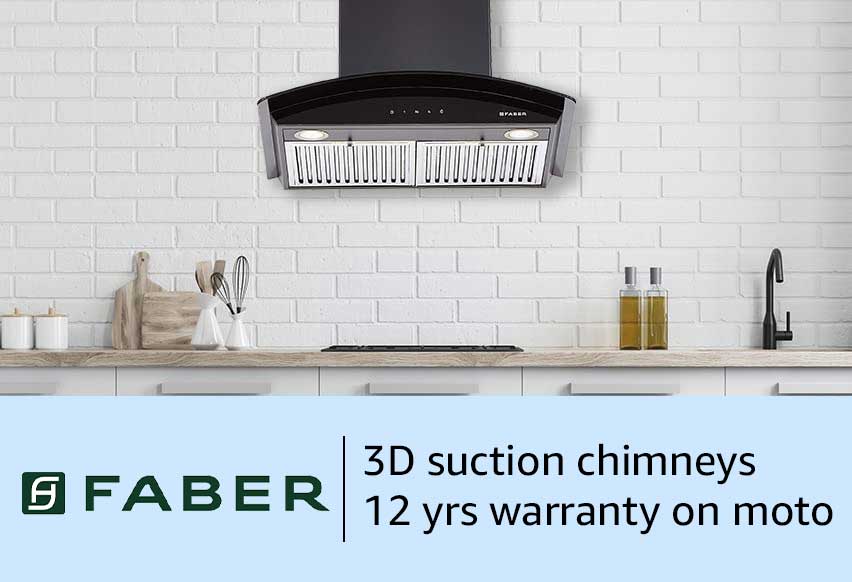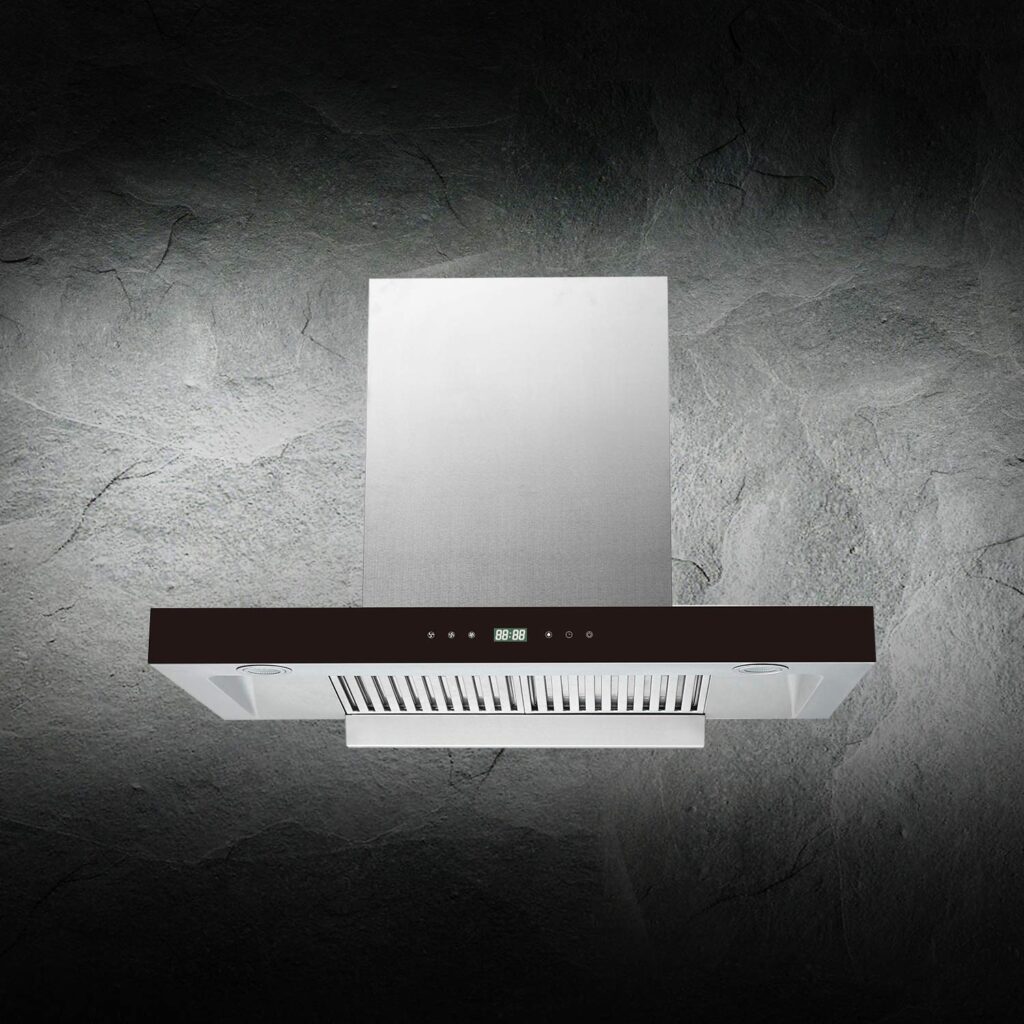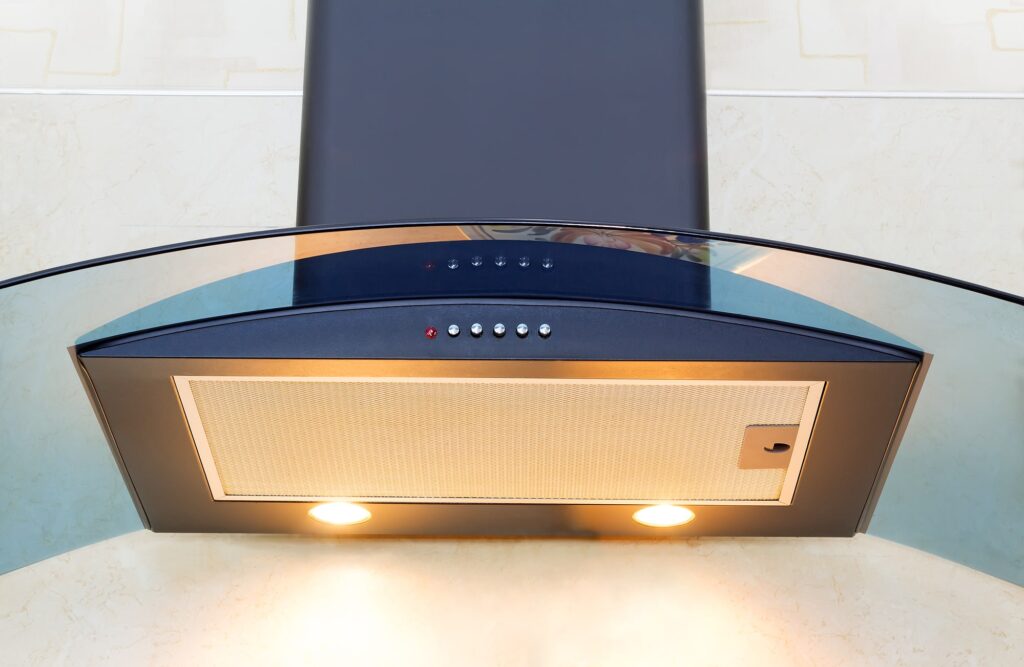

Stuffy and greasy kitchens are a nightmare. They take away the joy that should normally come from cooking your favorite meals. This problem becomes even harder to deal with if your favorite meals contain a lot of oil and involve a lot of frying, as is common with most traditional Indian dishes.
A kitchen chimney solves this problem by absorbing all the oil and fumes produced while cooking.
To fully achieve this, you need to get a kitchen chimney that is as efficient as it is suitable for your kitchen. This can be overwhelming because there are numerous types of kitchen chimneys available and there are several factors to be considered. But do not worry, we have done the research for you and have written this article to guide you on how to select a kitchen chimney that will suit all your needs.
Here are some important things to consider when choosing the best kitchen chimney to purchase.
- Size of Chimney and Cooking Hob
- Mounting Style of the Chimney
- Suction Power
- Type of Chimney Filter
- Type of Ducts
Size of the Chimney
The two standard sizes of kitchen chimneys available are 90cm and 60cm. Before selecting a chimney, it is necessary to take note of the size of your cooking hob or stove.
It is recommended that the chimney should be moderately larger in width than the stove. This is to ensure that the chimney absorbs all the smoke produced efficiently.
Naturally, if you have a stove with only two burners you might want to go for the 60cm chimney. But bear in mind that the type of food you cook also influences the size of the chimney.
If you regularly cook foods that are very oily and require a lot of frying, then a 60cm chimney might not always suffice. This is true regardless of if you use a two-burner or a four-burner stove. Therefore, a 90 cm chimney is recommended for most Indian kitchens.
Mounting Style of the Chimney
Kitchen chimneys are often classified based on how and where they are mounted in the kitchen. The two common types of chimneys based on this classification are wall-mounted and island chimneys.
Wall-Mounted Chimneys


As the name implies, these chimneys are installed against the wall, above the cooking hob. This type of chimney is ideal for kitchens that have their cooking hob placed next to the wall.
Wall-mounted chimneys come in all sizes and designs and are quite suitable for both small and large kitchens alike. They also require fewer ducts for the expulsion of waste fumes and oil particles. Therefore, they are considerably cheaper than the other types in this category.
Island Chimneys
These chimneys are mounted from the ceiling, usually in the middle of the kitchen. This is ideal for kitchen designs where the cooking hob can be found in the middle of the kitchen.
Island chimneys require a lot of ducts and pipes to expel smoke. The extra ducts increase the total cost of installation, making them more expensive than wall-mounted chimneys.
The Suction Power of the Chimney


The suction power of a chimney is the measure of its capacity to absorb oil particles and fumes. It is necessary to consider the suction power when choosing a chimney as it is directly associated with the primary purpose of the chimney.
If a chimney doesn’t have adequate suction power, it could leave behind some grease and fumes. This defeats the whole point of getting a chimney.
Most chimneys generally have suction power ranging from 700 m3/hr to 1600 m3/hr. The suction capacity of a chimney can be selected based on the size of the kitchen, the type of food regularly cooked, and the length of duct required.
Simply put, if you have a large kitchen or you cook oily foods regularly, you should consider getting a chimney with high suction power.
Type of Chimney Filter
A chimney filter traps oil/grease and solid particles (spices) and separates them from the air. This process reduces pollution by preventing the solid particles from entering the chimney and being released into the environment. The most common types of chimney filters are the mesh/cassette filter and the baffle filter.
The Mesh or Cassette Filter
These types of filters trap solid particles and grease between multiple layers of aluminum or steel mesh filters. The mesh has very tiny openings making it quite efficient for trapping solid particles and grease.
However, the tiny holes are easily clogged and require regular cleaning (usually every 2 weeks) to maintain good performance. Fortunately, it can be removed and cleaned without the help of a technician. Mesh filters are relatively cheap compared to the other types of filters.
The Baffle Filter
This type of filter is more commonly used as it is quite efficient. It uses layers of aluminum or steel to trap the solid particles and grease while allowing the air to pass through.
The baffle filter doesn’t require regular cleaning like the mesh type does and can be cleaned every 5-6 months. However, some baffle filters are difficult to detach and clean and so they require the help of a technician to be cleaned properly.
But others, especially the newer models are easily detached and can be cleaned without the help of a technician. Baffle filters are generally more expensive than mesh filters.
In general, chimneys with the baffle filter are often recommended, especially if you don’t want to spend a lot of time cleaning your filters regularly. But if you want to go for something cheaper, then you can opt for the mesh/cassette type.
Type of Duct
Kitchen chimneys are also classified based on the method of the expulsion of the oil and fumes waste produced in the kitchen.
The two types of chimneys based on this classification are ducted and ductless chimneys.
Ducted chimneys expel the waste outside the kitchen via a duct, while the ductless ones filter the smoke and dirt and let the filtered air back into the kitchen.


Ducted chimneys are better suited to handle the high volume of oil and smoke produced when cooking most traditional Indian meals. Ductless chimneys fall short in this regard.
Even so, ductless chimneys have a standout benefit in that they do not require any openings in the kitchen for the passage of exhaust ducts. Therefore, if you prefer to keep your kitchen completely sealed, the ductless type of chimney would be more suitable. But it is necessary to consider the extra cost of maintaining the filters used in ductless chimneys.
In general, ducted chimneys are preferred to ductless ones because they are more efficient and less expensive.
Kitchen chimneys are also selected based on the method of cleaning. The two available methods are automatic and manual methods. Auto-clean chimneys, although more expensive on the initial purchase, are often recommended. This is because they don’t require as much maintenance as manual ones. Thus, saving costs in the long run. Here are 8 of the best auto-clean chimneys for kitchens in India.
Some other factors to be considered when choosing a kitchen chimney are price, brand, and design.
The price is important as you wouldn’t want to break the bank to get a chimney. But at the same time, you wouldn’t want to buy a substandard product while trying to save cost. The prices of kitchen chimneys vary based on the brand, the suction power, the type of filter, the method of cleaning, and other features. You can find the prices of kitchen chimneys based on the brand or the type on Amazon.
Also, when choosing a brand of kitchen chimneys, it is important to select one that is very efficient and cost-effective. Customer care service is also important, and it might be a good idea to choose a brand that has a service center close to where you live.
The most popular brands of kitchen chimneys are Hindware, Elica, Faber, and Kaff.
Finally, selecting a kitchen chimney with a suitable design comes down to personal preference. The design of a kitchen chimney does not necessarily affect its performance, but it could change the look and feel of your kitchen.
The most common designs are curved glass, straight glass, pyramid, angular, straight line, and box-type. It is necessary to check the design and see how it would fit in your kitchen before making a decision.
Contents



